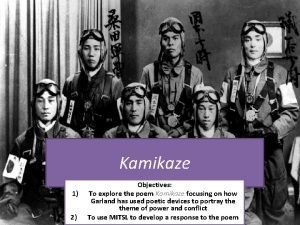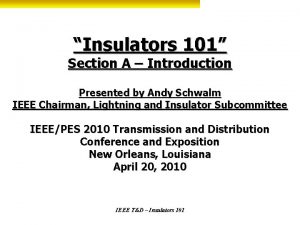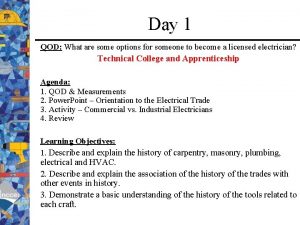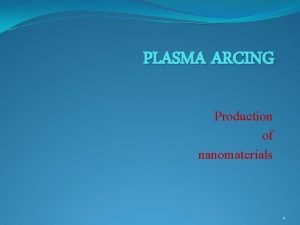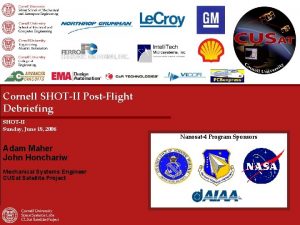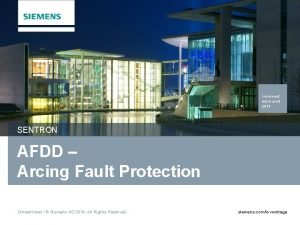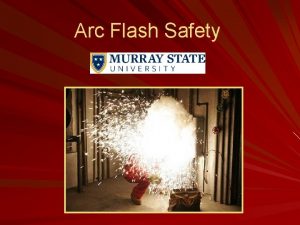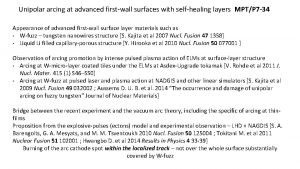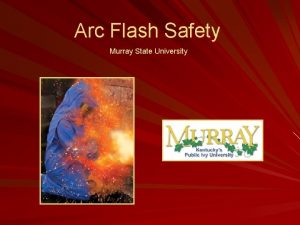Initial PostFlight Results of the Primary Arcing on














- Slides: 14

Initial Post-Flight Results of the Primary Arcing on Solar Cells At LEO (PASCAL) Flight Experiment Justin J. Likar 1, Teppei Okumura 2, Shunsuke Iwai 3, Philip Jenkins 4, Mengu Cho 5, Alexander Bogorad 6, and Steven Gasner 6 1 Lockheed Martin Space Systems Company (now with UTC Aerospace) 2 Japan Aerospace Exploration Agency (JAXA) 3 Kyushu Institute of Technology (now with Mitsubishi Electric Corporation) 4 United States Naval Research Laboratory (NRL) 5 Kyushu Institute of Technology 6 Lockheed Martin Space Systems Company

Introduction & Motivation • 20%-25% of satellite anomalies are associated with Power subsystem (Wade, 2014) • It is well established that spacecraft charging and associated electrostatic discharges (arcing) cause anomalies on spacecraft solar arrays • ISO, ECSS, AIAA, NASA, & proprietary guidelines illustrate industry responsiveness • Cho (2005) and Ferguson / Katz (2014) are among those attempting to estimate number of arcs on a GEO satellite – Most recent value lies between 100 and 800 annually • Studies are based upon rigorous analyses of GEO plasma conditions (LANL & GOES instruments) • Cumulative low power arcs may cause “weak” or “dropped” strings on typical EPS Gradual variation in observed performance & prediction is not caused by catastrophic Sustained Arcs (PSA or TSA) Unexplained anomalous performance / deviations of ~1% over time is not explained by Sustained Arcs (PSA or TSA) Marvin (1988) ¹ ¹ Lohmeyer (2014) J. Likar, et al 11 th European Space Weather Week 2

Space Weather Conditions Lead to ESD on Solar Arrays • Arc initiation most commonly occurs in one of two ways 1. Differential charging at Triple Point (Top Figure) • • • Most common in GEO, MEO, and PEO (Polar) In a substorm electron current increases and exceeds photocurrent driving spacecraft & CG potentials negative Due to differences in SEE coefficients the CG potential may drop slower than that of the spacecraft body IPG 2. Extreme Negative bias in high density plasma (Lower Figure) • Achievable in LEO or in Electric Propulsion plume plasmas • Both initiation processes relate to spacecraft charging mechanisms including floating potential, differential charging, … – Ultimate thresholds for each depend upon unique spacecraft design parameters determines risk or propensity to arc Likar (2006) • Consider parameters commonly used in spacecraft charging engineering tools (NASCAP 2 K, SPIS, SPENVIS, MUSCAT, …) – – Ne, i, Te, i, Maxwellian indices, … GEO Charging Index (Emin of 9 ke. V) • Real-time (or forecasted) data along with credible knowledge of susceptibility enables informed decisions J. Likar, etsatellite al 11 th European Space Weather Week 3

Do Primary or Flashover Arcs Degrade Performance? Gerhard (2014) Okumura (2007) • Definitive conclusions remain elusive • Ground laboratory studies are plentiful but generate debates as well as results • Recent conclusions are non-complementary 1. 2. Flashover / primary arcs degrade performance Flashover / primary arc energy insufficient to damage cells and degrade performance • No definitive flight experience to supplement growing library of data until now – – Arc discharge track shunts p-n junctions Toyoda (2003) Most recent ground testing was supplemental EMAGS 3 testing performed on AZUR 3 J cell & Si cell at Airbus No evidence of ESD related shunting • Degradation mechanism relies upon discharge induced leak current / shunt paths created within cell or at cell edge – – J. Likar, et al Degree / presence of degradation is energy dependent which varies by orbit, array design, and CIC design Ranges from 100 m. J to >100 m. J 11 th European Space Weather Week Likar (2013) 4

PASCAL Experiment Design Details • Capacitance simulates energy source in primary arc • C represents capacitance between the exterior insulator surface and spacecraft ground that provides the electrostatic energy as the surface flashover current R 1 = 100 k. W R 2 = 1 W C = Variable (1 n. F to 1 m. F) VB = Variable (-50 V to -300 V) • Electronics supplied by KIT & JAXA • Solar cell coupons by Lockheed Martin – Cells from flight stock • Coupon substrate design is representative of a modern space solar panel substrate • Double insulated cell side dielectric, no grout, but bus bars encapsulated J. Likar, et al 11 th European Space Weather Week 5

MISSE-8 Architecture & ISS Accommodations Zenith • PASCAL is included on the NRLdeveloped Platform for Retrievable Experiments in a LEO Space Environment (PRELSE) platform – – Also known as MISSE-8 Launched via STS-134 and deployed via EVA • ISS accommodations on ELC 2 top deck – – Installed into MISSE-7 PECa pedestal PASCAL on zenith facing surface • Uses ISS power and communications / telemetry Photo Credit: NASA Photo Credits: NASA Mission Details Orbit (ISS) 350 km to 450 km at 51. 5 o Duration 2. 14 yr Plasma 1 Location is ELC 2 (ULF 3) J. Likar, et al Attitude / Orientation 1 Authors 104 cm-3 to 106 cm-3 and Te 0. 02 e. V to 2. 0 e. V Zenith facing (neither ram or wake) are grateful for assistance of J. Minow of NASA MSFC 11 th European Space Weather Week 6

Coupons Clean Room (Pre-Launch) UTJ Si ATJM Si UTJ XTJ ATJM ZTJM MJ MJ UTJ Si ATJM Si MJ UTJ XTJ ATJM ZTJM MJ Clean Room (As Returned) J. Likar, et al 11 th European Space Weather Week 7

Mission Timeline January 2013 • • January 2011 • Integration with MISSE-8 PEC Operations continue VIS inspection July 2013 • • • Operations cease Retrieval via EVA Store inside ISS June 2014 • • May 2011 • • • Launch via STS-134 Install via EVA Operations commence June 2010 J. Likar, et al 11 th European Space Weather Week Return via Space-X 3 (May) De-integrate with MISSE-8 PEC 8

VIS Microscopy Inspections • Evidence of deterioration of diode / glass near diodes PASCAL Permanent Sustained Arc (PSA) • Electrical short between strings • Electrical short to substrate • Damage to substrate Ground Tests • Evidence of melting / explosion near diodes • Little or no evidence of arcing at ICs or cell edges (worst shown) • Observable damage to one IC on one cell (UTJ) – magnitude difficult to discern • Evidence of arc damage on substrate & grout • At cell edges and ICs J. Likar, et al 11 th European Space Weather Week 9

Primary Arc Inception Voltage • >1200 arcs observed in-orbit • On-orbit PA inception voltage compared to published laboratory data & PASP Plus flight data – 60 min to 90 min spent at each bias voltage • With few exceptions, on-orbit threshold is lower – All cells are different; there is statistical uncertainty in all values • For typical SA grounding methods voltage is approximately spacecraft floating potential – Floating potential is predictable (real-time? ) Composite of current transients for ATJM (Cell 5) Likar (2014) J. Likar, et al 11 th European Space Weather Week 10

Analyzing Cell Performance On-Orbit • PASCAL included capability for in situ LIV & DIV however utility of real-time measurements was ultimately limited – – – Neither PASCAL or MISSE-8 are sun tracking Cell temperature telemetry not functional LIV are performed at random sun angles • Applied typical corrections to data – – Beta angle, measured temperature (from MISSE-8), cell temperature coefficients, radiation, wire impedance Uncertainty (± 4 min) in sun angle is sufficient to envelope analytical predictions • ± 4 min can yield >20 deg variation in sun angle (and temperature) at high sun angles Cell temperature fit to beta angle BOL (Ground) ATJM (Cell 5) 13 March 2013 3 July 20111 20 Dec 2012 Unable to measure current >275 m. A Post-Flight • Continuous illumination LIV immediately upon removal from clean room (using X-25 irradiator & filter) • LAPSS (identical to pre-flight measurements) • Analytical predictions – Corrected for radiation via AE 9 / AP 9 • 1 Authors 2 Authors J. Likar, Compared to SEDA-AP SDOM 1 & Boeing TLD 2 measurements are grateful for assistance of K. Koga of JAXA et algrateful for assistance of J. Wert of Boeing are 11 th European Space Weather Week Poor instrument coverage over mission lifetime; maximum 53% but typical <20% 11

Post-Flight Performance (X-25) Cell Type Manuf Description CG Thickness %Change 1, 2 BOL EOL %Change 1, 2 FF EOL Isc BOL Voc TJ Tecstar Ga. In. P 2/Ga. As/Ge 6 mil 2. 455 2. 437 -0. 73 0. 372 0. 376 +0. 94 0. 762 0. 764 +0. 24 TJ Tecstar Ga. In. P 2/Ga. As/Ge 6 mil 2. 335 2. 284 -2. 21 0. 345 0. 359 +4. 09 0. 767 0. 778 +1. 49 Si 3 Tecstar n on p 6 mil 0. 568 0. 589 +3. 69 1. 004 0. 957 -4. 65 0. 630 0. 470 -25. 5 Si 3 Tecstar n on p 6 mil 0. 557 0. 582 +4. 45 0. 922 -2. 41 0. 639 0. 470 -26. 5 ATJM Emcore In. GAP/In. Ga. As/Ge 6 mil 2. 678 2. 615 -2. 35 0. 544 +1. 63 0. 770 +0. 88 ATJM Emcore In. GAP/In. Ga. As/Ge 6 mil 2. 655 2. 540 -4. 35 0. 551 0. 547 -0. 65 0. 749 0. 768 +2. 54 ZTJ Emcore In. GAP/In. Ga. As/Ge 6 mil 2. 705 2. 638 -2. 48 0. 414 0. 413 -0. 27 0. 779 +0. 21 UTJ Spectrolab Ga. In. P 2/Ga. As/Ge 3 mil 2. 565 2. 504 -2. 40 0. 568 0. 559 -1. 58 0. 713 0. 722 +1. 30 UTJ Spectrolab Ga. In. P 2/Ga. As/Ge 3 mil 2. 587 2. 531 -2. 18 0. 556 0. 558 +0. 38 0. 722 0. 742 +2. 82 XTJ Spectrolab Ga. In. P 2/Ga. As/Ge 6 mil 2. 640 2. 558 -3. 13 0. 428 0. 416 -2. 92 0. 784 0. 788 +0. 48 1 Error of +/-2% for typical continuous irradiation LIV (X-25) LAPSS results largely confirm X-25; undergoing continued study 3 Silicon results are puzzling; undergoing continued study 2 Preliminary J. Likar, et al 11 th European Space Weather Week 12

Operational Impacts Marvin (1988) Ganushkina (2014) Likar (2012) NASCAP 2 K spacecraft model for spacecraft charging simulations J. Likar, et al 11 th European Space Weather Week 13

Conclusions • It is reasonable to suspect that primary arcs be considered as possible reason for slow degradation of space solar array performance • Given the present industry interest in All Electric missions / systems the propensity for primary arcs and spacecraft charging related effects may be increasing • PASCAL intended to advance the understanding of the following question – Can non-catastrophic arcs lead to accumulated damage and degraded cell performance? • PASCAL highly successful in generating primary arcs at realistic voltages on ISS – >1200 arcs were recorded on the two coupons • Very little, if any, evidence of arc induced damage observed by VIS microscopy • Very little, if any, evidence of degradation observed by post-flight LIV (excluding Si) • It appears clear that transients with peak current ~20 A and dissipated energy ~100 m. J do not inflict measureable damage to cell types considered up to 100 – 200 arcs • Applicability of results to PA induced contamination losses under study – Early results suggest impact is smaller than predicted • Mitigation for secondary arcs on front side, back side, et cetera remains imperative • Optimal solution remains – prevent arcing on array J. Likar, et al 11 th European Space Weather Week 14
 Arcing in swathes meaning
Arcing in swathes meaning Ncis
Ncis Why must an arcing device be contained
Why must an arcing device be contained Plasma arcing
Plasma arcing Psle results 2013
Psle results 2013 Sơ đồ cơ thể người
Sơ đồ cơ thể người Số nguyên là gì
Số nguyên là gì Tia chieu sa te
Tia chieu sa te đặc điểm cơ thể của người tối cổ
đặc điểm cơ thể của người tối cổ Tỉ lệ cơ thể trẻ em
Tỉ lệ cơ thể trẻ em Các châu lục và đại dương trên thế giới
Các châu lục và đại dương trên thế giới ưu thế lai là gì
ưu thế lai là gì Các môn thể thao bắt đầu bằng tiếng đua
Các môn thể thao bắt đầu bằng tiếng đua Tư thế ngồi viết
Tư thế ngồi viết Bàn tay mà dây bẩn
Bàn tay mà dây bẩn
